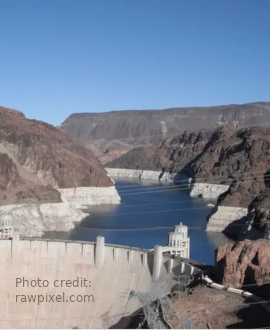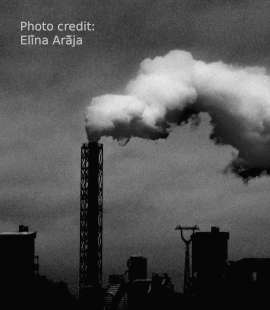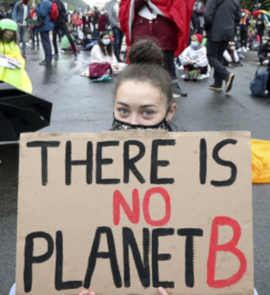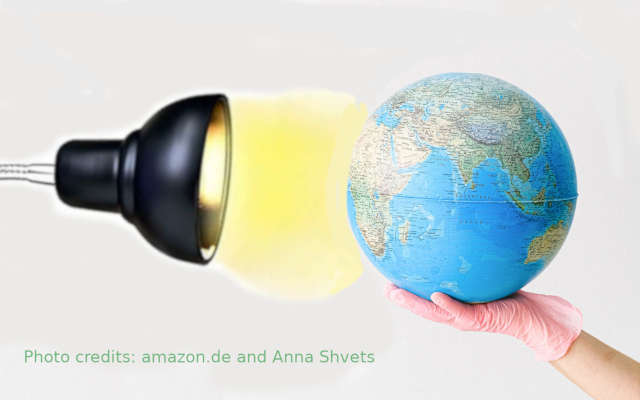Global warming can no longer be denied.
The average world temperature has been slowly rising for decades. We have known about this for a long time now, so why haven’t we done anything about it? The 2022 International Symposium On Climate Change has been dismissed as a whole lot of blah-blah, a lot of talk with no clear agreement on what to do next, a choreographed display of concern by politicians with nothing to show for it.
Why all the fuss about a few measly degrees?
A one-degree (Centigrade) rise in temperature doesn’t seem like a lot, but remember that’s a one-degree rise in average temperature over a 24-hour day, 365 days per year. And it’s not evenly spread out across time — it can manifest as 20° warmer on a few hot summer afternoons, and you would certainly notice that.

And the rise is not spread out evenly geographically, either. The US Southwest has seen an extreme rise in temperature accompanied by an exceptional drought last year, depleting the reservoirs and ruining the growing season there. Paradoxically, some areas have seen colder weather, like the snow in Texas last year. How is such a thing possible? The weather changes we’re seeing work like valves that redirect, block, or let through the weather. If climate change causes a high-pressure area in a place that doesn’t usually have them, it will act as a giant stopper that will push warm and cold air in unusual directions. This causes hot weather and drought, or rain and floods, or whatever, in different directions and places.

But what causes it?
It’s generally acknowleged that the release of large quantities of carbon dioxide (CO2) is driving climate change. As we as a world have moved from an agrarian society to a manufacturing one, along with a population of nearly 8 billion people, the increasing amounts of CO2 traps sunlight which causes temperatures to rise.
Action must be unanimous
Greenhouse gases like carbon dioxide don’t respect national borders. We can’t build a dome over, for example, Singapore, and say these are your greenhouse gases, and you alone must suffer the consequences if you don’t control them. Rather, the effects of global warming are just that — global. The ruinous effects quickly spread out across the whole world.
The ideal solution for your country, of course, is for other countries to control their emissions at whatever expense while you just keep on polluting as always — but this quickly leads to what is called the tragedy of the commons.
So all nations (at least all of the larger ones) must act in concert. However, back in 2019 then-President Trump sabotaged this when he pulled the USA out of the Paris Accords. Precious years in the race against disaster were lost.
Russia and Canada
I haven’t spoken to anyone from Russia or Canada on how they feel about global warming, but remember, these are cold places. If I lived there, I sure wouldn’t mind the temperature getting a few degrees warmer, especially in winter. I’m not saying that Russia, Canada, or any of the other chilly countries would deliberately sabotage the fight against global warming, but their motivation to fight climate change is not as strong as say, Egypt’s.
Heat, drought, and war
The US Southwest has seen exceptional heat and drought for the past few years. Many farms have lost not just one but two growing seasons now — because the irrigation water they depend on from massive reservoirs is almost gone. This has been a tragedy for the farmers who depend on farm income to pay their mortgages and other expenses. But the other half of this tragedy is the rise in food prices. The price of food in England has increased over 10% from last year, without a corresponding rise in wages.
Aside from global warming, food prices are up because Ukraine, a major wheat-producing region, has had its commerce disrupted by the war. In addition, those nations sympathetic to Ukraine want the starve the Russian bear by refusing to buy Russian exports, such as energy — but Russia is still able to sell its energy, elsewhere, and Europe’s refusal to buy Russian oil and gas means they must buy what they need from other, more expensive sources.
But I digress.

Marginal living
Among the poorer nations, many people living there are just barely scraping by. Fighting climate change does not come cheap; to substitute wind and solar for oil and gas costs a pretty penny. Even those in wealthier countries want to upgrade their lifestyle to the limit of what their money can buy; leaving little room to back off a bit when needed to defend against warming temperatures.
And then there’re those who disregard environmentally sound practices for an easy profit. An example would be mine owners in a remote location who operate their mine without regard to environmental or safety regulations. They know quite well they aren’t doing the right thing, but if they let their enterprise be pushed into unprofitability, they would have to close it — and their entire workforce would become unemployed.
Is it already too late?
Some of the worst effects of climate change can’t be reversed in the near term. Many Arctic and Antarctic glaciers have melted or are on the verge of melting, glaciers that have been hundreds of years in the making. They can’t be quickly replaced. Low-lying coastal regions are being flooded by rising sea levels. And I’m talking about the situation today, assuming that nothing makes it worse (but of course it is becoming worse).
So what can we do?
I came up with the idea or a giant mirror in outer space, reflecting a portion of the sun’s rays away. But it would have to be huge — at least the size of Ireland to have any effect at all — and would probably be unaffordable anyway. A better solution being proposed would be to release space bubbles between the Sun and the Earth, permanently stationed at Lagrange Point 1.
The big problem here is that who would control it? If South Korea owns it and is making the decisions, they may decide they like having lots of light and warmth and keep Argentina in a permanent semi-darkness to cool the globe so they don’t have to.
But the usual solution proposed is to replace the burning of fossil fuels with non-CO2-producing energy sources like solar, wind, tides, and yes, even nuclear. But nuclear power generation comes with its own global warming problem — while it doesn’t release any greenhouse gases, those cooling towers produce a lot of heat going directly into the atmosphere, without needing to make any CO2 to do so.
More trees are often recommended — but where? Large swaths of forest land have been cut down to make room for new farms and cities; no one is going to tear those farms and cities down and start replanting the forests in the newly cleared land. And while trees are good at capturing carbon, when they die and rot they will just release all the carbon they’ve stored up in the form of carbon dioxide.
One option is to build large floating islands in the ocean, using the abundant sunlight there to grow carbon-sucking plants. But this would block sunlight from entering the ocean proper, stopping CO2-using algae from growing and taking up the task itself.
There are technologies for capturing CO2 and putting it into manufactured products like bendable concrete (I can’t even imagine what that’s like) but I’m sure these represent just a drop in the bucket.
Things that are being done today
It’s not all doom and gloom. The US state of California has mandated all new cars be zero emissions starting in the year 2035 — which would mean no CO2 at all — provided of course they aren’t recharged with electricity from fuel-burning power plants.
Los Angeles and other cities are banning natural gas hookups for new homes, meaning they must have all-electric kitchens, which don’t produce CO2. But again it depends on where the electricity is coming from.
Germany had an experiment with subsidizing rail transportation with their 9-Euro ticket, a monthly pass good over large areas in an attempt to get people out of their cars. It was successful in that ridership went up; but sadly this experiment ended a week ago. There is talk of possibly reviving this experiment.
What I am doing
I myself am doing a few things to reduce my carbon footprint. I don’t own a car, but I will rent one occaisionally if there’s no other choice. I eat meat, but not at every meal. I separate my recyclables and hope the guy that collects them doesn’t put them all together again. Sometimes, if I don’t actually have to flush, I will wait until later and flush once instead of twice. And I’ve signed up for green energy — electricity generated by wind and other carbon-neutral sources.
I don’t live near the coast, so I don’t personally have to worry about rising sea levels. I do live near a river, but not too close, so I have good drainage. Of course there have been a few warm days here this season, but it was basically an ordinary summer.

Fridays For Future
Fridays For Future is a youth-led social movement protesting the lack of action on climate change. They have scheduled a climate strike on 23 September. Click here to get to their web site, and get involved!
